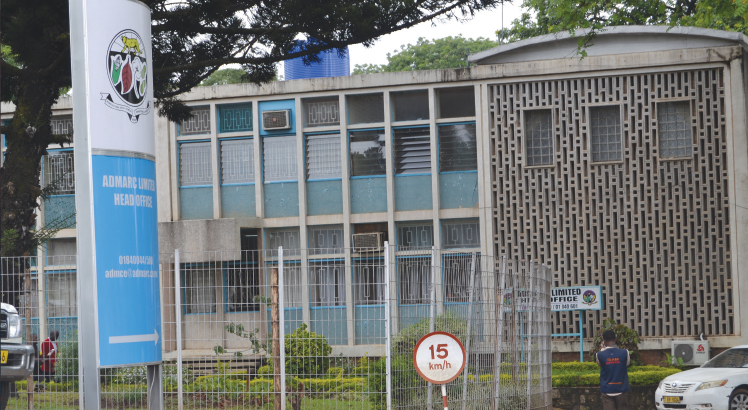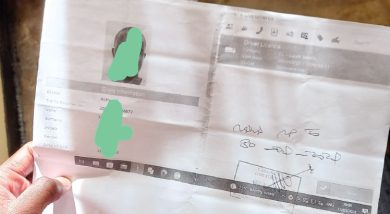The year govt let farmers down
Early last year, the Ministry of Agriculture stated that the Agricultural Development Marketing Corporation (Admarc) would be the sole government institution buying maize from farmers as it is strategically positioned to buy the grain even in hard-to-reach areas.
The ministry’s Principal Secretary (PS) for Irrigation Services Geoffrey Mamba, speaking when the ministry officials met the Parliamentary Committee on Agriculture at the time, further committed that Admarc would go on the market early to ensure that it buys enough maize before vendors, who often exploit farmers by offering uncompetitive prices.

Government had set K500 per kilogramme (kg) as the minimum farm gate price for maize.
Call for more resources
The parliamentary committee on called on government to allocate more resources to Admarc for the purchase of maize which the grain trader would in turn sell to Malawians during the lean season.
However, when the national budget was tabled in Parliament on March 2, only K12 billion was allocated for the maize purchase, with no indication as to which institution would handle the maize purchases. The allocation was enough to buy only about 22 000 metric tonnes (MT) of maize.
The Ministry of Agriculture, however, assured a Budget Cluster of the parliamentary committee on Agriculture and Natural Resources and Climate Change that the whole K12 billion would go to Admarc to handle maize purchases, adding that other efforts were also being put in place to ensure that the country stocks enough maize.
During development rallies, various Cabinet ministers also assured farmers that Admarc would open its markets for them to sell maize to Admarc at reasonable prices.
The development gave hope to farmers that they would sell their maize to Admarc and not vendors. The commitment to have Admarc handle maize purchases also excited Admarc officials, who made an undertaking that they would go on the market early to buy maize.
The then Admarc acting general manager Ethel Zilirakhasu said Admarc was strategically positioned to buy maize from farmers as it has structures across the country.
“We will be able to absorb all the money. We have markets across the country. We have skeleton staff in place that will handle the purchases,” she said.
No funding to Admarc
Despite that assurance, government delayed in releasing the funds.
As a result, farmers started selling their produce to vendors, who were buying at as low as K200 per kilogramme and in some areas K250 per kg.
Calls from the Farmers Union of Malawi and Parliamentary Committee on Agriculture to have government release money to Admarc for maize purchases landed on deaf ears.
Government gave excuses of high moisture content in the grain as the reason for not giving Admarc money to buy maize.
In a twist of events, government silently gave the National Food Reserve Agency (NFRA) K6 billion towards the end of May 2023 to buy maize. This was despite Admarc indicating that it was ready to start buying maize if government provided it with resources.
NFRA acting chief executive officer David Loga on May 29 2023 confirmed being provided with the resources, adding that the agency was expecting additional resources.
“Yes we have been given the K6 billion. We are targeting to buy 10 822 metric tonnes. We will see how we will progress. We might get more money,” he said.
NFRA, which is positioned in cities and other urban areas, was buying maize from suppliers with a minimum of 1 million tonnes.
A farmer needed to have at least 20 bags of maize, each weighing 50kg, to sell to NFRA. This was already putting smallholder farmers at a disadvantage, who also needed to transport maize to NFRA premises.
Vendors as winners
Vendors took advantage of the situation to exploit smallholder farmers by buying at price lower than farm gate prices.
Some of the vendors were also externalising the maize to neighbouring countries.
Releasing money to NFRA before giving Admarc did not go down well with the Parliamentary Committee on Agriculture and Irrigation chairperson Sameer Suleman, who observed that the move was promoting exploitation of farmers by vendors.
He called on government to release the remaining K6 billion to Admarc so that it starts buying maize from farmers, but government did not fund Admarc.
On June 12, Admarc board chairpeson Zachary Kasomekera also said Admarc was in a position to handle maize purchases, except there was no money to buy the maize.
“We are very ready to start purchases. If we had the money today we would start buying,” said the board chair, adding Admarc was anticipating to get the K6 billion to start buying maize.
Admarc still had hope that it would get the remaining K6 billion even after the Ministry of Agriculture PS Dickxie Kampani indicated on June 16 that the whole K12 billion would now be given to NFRA.
“The K12 billion is for maize, yes, but the decision is that NFRA should purchase that maize because that maize is for social functions. The K12 billion will be utilised by NFRA to buy maize for the strategic grain reserves, [SGR]” he said.
On June 22, when Admarc officials appeared before the Parliamentary Committee on Agriculture to update the committee on the status of the company and its preparedness to handle crop purchases, Zilirakhasu said Admarc was still hopeful that the Ministry of Agriculture will assign it to buy maize for the strategic grain reserve (SGR) and was waiting to be allocated money.
However, Admarc never got the remaining K6 billion was later given to NFRA. NFRA was also given about K8 billion that government had accessed from the drought risk insurance to buy maize.
The presence of vendors on the market led to maize scarcity and further pushed prices up in urban areas. NFRA was forced to revise its buying price from K550 per kg to K750 per kg. The development meant NFRA would buy less maize than planned.
In reaction, Suleman said government had let farmers down.
The failure to support Admarc to buy maize where farmers were located has since contributed to food insecurity in the country.
NFRA has not been able to stock enough maize to support the price stabilisation function of Admarc and the humanitarian and emergency response by the Department of Disaster Management Affairs.
By mid-December 2023, NFRA had in stock 68 000MT, but the country needed 164 000MT to respond to hunger that has affected over 4.4 million people.
Apart from cash transfers, government needed to provide maize to some of the families facing hunger.






Wow amazing blog layout How long have you been blogging for you made blogging look easy The overall look of your web site is magnificent as well as the content